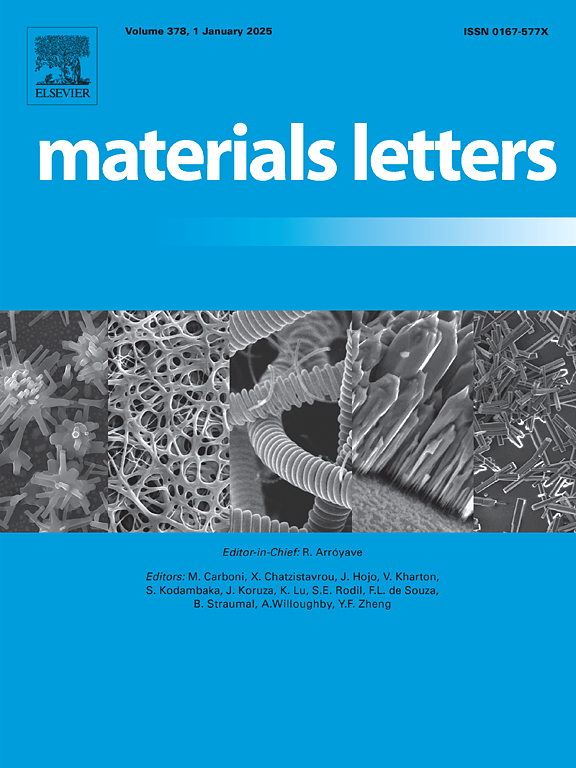A novel developed plasma processing of optical components in closed chamber without aggressive reagents: Polishing performance, removal analysis and its characterization
IF 2.7
4区 材料科学
Q3 MATERIALS SCIENCE, MULTIDISCIPLINARY
引用次数: 0
Abstract
Finishing optical components with plasma is emerging as a new trend in advanced manufacturing to provide precise and accurate substrates. The plasma process is a relatively recent technique that has gained widespread use for improving the quality of optical materials due to its many advantages. This study examines MRR and surface roughness changes on both faces of the cuboidal-shape prism. The result reveals that %ΔRa decreases with increases in the plasma chamber pressure. The maximum and minimum %ΔRa values are observed to be 372.17 and −61.56 for polished surfaces at 5 and 50 mbar plasma chamber pressure, respectively. Meanwhile, the maximum and minimum observed values for lapped surfaces are 24.5 and −1.01 at 5 and 50 mbar plasma chamber pressure, respectively. Surface morphology investigations demonstrated that micro-cracks, scratches, and defects are decreased after MPPP. EDX analysis shows the occurrence of elements, signifying reactions on plasma processed surface. Additionally, elemental mapping is used to verify the distribution of all constituent elements on the processed surfaces.
一种新型的光学元件在封闭腔室中无腐蚀剂等离子体加工:抛光性能、去除分析及其表征
用等离子体精加工光学元件是先进制造的新趋势,以提供精确和精确的基板。等离子体工艺是一种相对较新的技术,由于其许多优点,在提高光学材料质量方面得到了广泛的应用。本研究考察了长方体棱镜两面的MRR和表面粗糙度的变化。结果表明,%ΔRa随等离子体室压力的增大而减小。在5毫巴和50毫巴等离子体室压力下,抛光表面的最大和最小%ΔRa值分别为372.17和- 61.56。同时,在5 mbar和50 mbar等离子体室压力下,叠接表面的最大和最小观测值分别为24.5和- 1.01。表面形貌研究表明,MPPP后微裂纹、划痕和缺陷减少。EDX分析显示了元素的发生,表明了等离子体加工表面的反应。此外,元素映射用于验证所有组成元素在加工表面上的分布。
本文章由计算机程序翻译,如有差异,请以英文原文为准。
求助全文
约1分钟内获得全文
求助全文
来源期刊

Materials Letters
工程技术-材料科学:综合
CiteScore
5.60
自引率
3.30%
发文量
1948
审稿时长
50 days
期刊介绍:
Materials Letters has an open access mirror journal Materials Letters: X, sharing the same aims and scope, editorial team, submission system and rigorous peer review.
Materials Letters is dedicated to publishing novel, cutting edge reports of broad interest to the materials community. The journal provides a forum for materials scientists and engineers, physicists, and chemists to rapidly communicate on the most important topics in the field of materials.
Contributions include, but are not limited to, a variety of topics such as:
• Materials - Metals and alloys, amorphous solids, ceramics, composites, polymers, semiconductors
• Applications - Structural, opto-electronic, magnetic, medical, MEMS, sensors, smart
• Characterization - Analytical, microscopy, scanning probes, nanoscopic, optical, electrical, magnetic, acoustic, spectroscopic, diffraction
• Novel Materials - Micro and nanostructures (nanowires, nanotubes, nanoparticles), nanocomposites, thin films, superlattices, quantum dots.
• Processing - Crystal growth, thin film processing, sol-gel processing, mechanical processing, assembly, nanocrystalline processing.
• Properties - Mechanical, magnetic, optical, electrical, ferroelectric, thermal, interfacial, transport, thermodynamic
• Synthesis - Quenching, solid state, solidification, solution synthesis, vapor deposition, high pressure, explosive
 求助内容:
求助内容: 应助结果提醒方式:
应助结果提醒方式:


